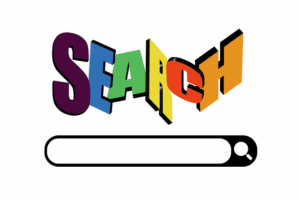Master SEO Content Refresh Strategies for Optimal Optimization

SEO Content Optimization is a strategy for digital marketers to enhance online presence through keyw…….
In the dynamic world of digital marketing, on-page SEO (Search Engine Optimization) has emerged as a powerful strategy to enhance website visibility and drive organic traffic. This comprehensive guide delves into the intricacies of an on-page SEO course, offering readers a detailed roadmap to mastering this essential aspect of online presence. Throughout this article, we will explore various facets of on-page SEO, from its foundational concepts to cutting-edge techniques, providing valuable insights for marketers, business owners, and anyone seeking to optimize their online content effectively.
The digital landscape is highly competitive, with search engines like Google constantly evolving their algorithms to deliver the most relevant results to users. An on-page SEO course equips individuals with the skills to create compelling, optimized web pages that capture the attention of both search engine crawlers and human visitors. By understanding and implementing best practices, businesses can improve their search rankings, attract a larger audience, and ultimately boost online success.
On-page SEO refers to the practice of optimizing individual web pages to increase their relevance and authority in search engine results pages (SERPs). It involves refining various elements within a page’s content, structure, and code to align with the criteria of search engines, primarily Google. The primary goal is to ensure that a webpage provides value to users while also signaling to search algorithms that it is a credible source of information.
The core components of an on-page SEO course typically include:
Keyword Research and Optimization: Identifying relevant keywords and phrases that potential customers use when searching for products or services similar to those offered by the website. These keywords are strategically placed within page titles, headings, meta descriptions, and content to signal search engines about the topic of the page.
On-Page Content Optimization: Creating high-quality, engaging content that satisfies user intent. This involves crafting compelling titles, writing informative body text, using headings (H1, H2, etc.) to structure content, and incorporating relevant internal and external links.
Technical SEO Implementation: Ensuring the technical aspects of a webpage are optimized for search engines. This includes improving page load speed, ensuring mobile-friendliness, implementing structured data markup, creating XML sitemaps, and optimizing URL structures.
User Experience (UX) Enhancement: Focusing on making web pages user-friendly and easily navigable. Elements like intuitive menus, clear call-to-actions (CTAs), optimized images, and a logical site structure contribute to a positive UX, encouraging visitors to explore further.
Meta Tags and Descriptions: Crafting compelling meta titles and descriptions that accurately represent the content of each page while incorporating target keywords. These tags appear in SERPs and can influence click-through rates (CTRs).
The concept of on-page SEO has evolved over time, mirroring the changing landscape of search engine algorithms. In the early days of the internet, keyword stuffing was a prevalent practice, where webmasters would cram pages with keywords to manipulate rankings. However, Google’s inception and subsequent algorithm updates introduced new challenges, emphasizing quality content and user experience.
As search engines became more sophisticated, on-page SEO strategies shifted focus from keyword density to semantic relevance and user intent. The introduction of RankBrain, Google’s machine learning system, further emphasized the importance of understanding user queries and providing valuable content. This evolution has led to a more nuanced approach, where on-page SEO experts now prioritize creating comprehensive, engaging content that meets the needs of searchers.
On-page SEO’s influence is not limited to any specific region; its impact is felt worldwide as digital connectivity continues to grow exponentially. Here’s a global outlook on this dynamic field:
| Region | SEO Trends | Market Dynamics |
|---|---|---|
| North America | Voice search optimization, video SEO | High competition, focus on long-tail keywords |
| Europe | Mobile-first indexing, localized content | Diverse languages, strict privacy regulations (GDPR) |
| Asia Pacific | E-commerce SEO, structured data markup | Rapid e-commerce growth, emphasis on user reviews |
| Latin America | Local SEO, schema markup | Emerging markets with growing internet penetration |
Key Global Trends:
Mobile Dominance: With the majority of internet users accessing websites via mobile devices, optimizing for mobile has become a critical aspect of on-page SEO. Google’s mobile-first indexing ensures that mobile-friendly pages are prioritized in rankings.
Voice Search Integration: As voice assistants gain popularity, optimizing content for voice search queries is essential. This involves using conversational language and long-tail keywords.
Video SEO Rise: Video content is increasingly popular, and search engines are developing algorithms to better understand video metadata, making video SEO a significant trend.
Local SEO Importance: In regions with diverse languages and cultures, local SEO strategies help businesses target specific geographic locations and cater to localized preferences.
The on-page SEO course is not just about technical optimizations; it has significant economic implications for businesses operating in the digital arena.
Competitive Landscape: On-page SEO plays a pivotal role in shaping the competitive landscape of various industries. Effective optimization can level the playing field, allowing smaller businesses to compete with larger competitors by providing better content and user experiences.
Investment in Digital Marketing: According to Statista, global digital marketing spending reached $374.29 billion in 2021 and is projected to grow further. A substantial portion of this investment is allocated to SEO, highlighting the economic significance of optimizing web pages.
Measuring the ROI of on-page SEO efforts is crucial for businesses. Tools like Google Analytics and Search Console provide valuable insights into organic traffic, click-through rates, and conversion metrics. By analyzing these data points, marketers can attribute sales or leads back to successful SEO campaigns, justifying investments in this area.
The technical aspects of on-page SEO are fundamental to ensuring search engines can crawl and index web pages effectively. Here are some critical elements:
Site Speed Optimization: Google prioritizes fast-loading sites, and tools like PageSpeed Insights help identify areas for improvement. Minimizing HTTP requests, compressing images, and leveraging browser caching can significantly enhance page speed.
Mobile Responsiveness: With mobile traffic dominating, ensuring websites are responsive and adapt to different screen sizes is crucial. Google’s Mobile-Friendly Test is a valuable tool for this purpose.
Structured Data Markup: Implementing structured data using Schema.org vocabulary helps search engines understand content better, leading to enhanced rich snippets in SERPs.
XML Sitemaps: Creating and submitting XML sitemaps to search engines facilitates crawling, especially for complex websites with dynamic content.
URL Structure: Clean, descriptive URLs improve crawlability and user experience, making it easier for both users and search engines to navigate the site.
A critical aspect of on-page SEO is prioritizing the user experience, ensuring that web pages are not only optimized for search engines but also for human visitors.
Intuitive Navigation: Easy-to-use menus and navigation bars help users explore the site efficiently, reducing bounce rates.
Clear Call-to-Actions (CTAs): Well-designed CTAs guide users toward desired actions, whether it’s making a purchase, subscribing to a newsletter, or downloading an e-book.
Optimizing for Scannable Content: Using headings, bullet points, and short paragraphs makes content easier to scan, improving user engagement.
Mobile Responsiveness (again): Ensuring mobile users have a seamless experience with optimized touch targets and fast loading times is essential.
Meta tags and descriptions are often overlooked but play a vital role in on-page SEO.
Meta Title: This appears as the page title in SERPs and should be concise, incorporating target keywords while also being compelling enough to encourage clicks.
Meta Description: A short paragraph (150-160 characters) that provides a summary of the page’s content and includes a call to action. It can significantly impact CTRs.
Best practices for meta tags include:
On-page SEO is a dynamic and ever-evolving field that requires a deep understanding of search engine algorithms, user behavior, and web development practices. By optimizing individual web pages, businesses can improve their online visibility, attract more qualified traffic, and ultimately drive conversions.
As the digital landscape continues to transform, staying updated with the latest trends and best practices in on-page SEO will be crucial for anyone looking to excel in the online arena. This course provides a solid foundation, but continuous learning and adaptation are key to success in this fast-paced industry.

SEO Content Optimization is a strategy for digital marketers to enhance online presence through keyw…….

Internal linking is a key SEO Content Optimization strategy enhancing user experience and search vis…….

On-Page SEO focuses on optimizing web pages for search engines using keywords, meta tags, and high-q…….

On-Page SEO strategically optimizes web pages for better search rankings by balancing technical (sit…….

SEO Content Optimization is a digital marketing strategy that boosts online visibility by understand…….

Schema markup is a powerful structured data language vital for modern SEO strategies, enabling searc…….

Meta tags are crucial for SEO Content Optimization, guiding search engines to understand webpage con…….

SEO Content Optimization is vital for online success, focusing on understanding user intent behind s…….

SEO Content Optimization is a multi-faceted process that involves strategic content creation, keywor…….

On-Page Analytics is a key tool for SEO, providing insights into user interactions and page performa…….